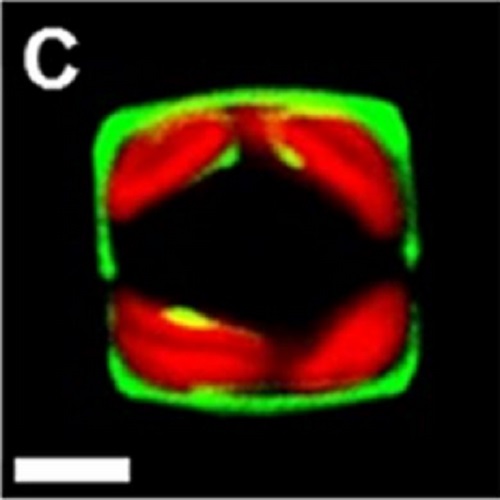Pentalysine clusters mediate silica targeting of silaffins in Thalassiosira pseudonana.
The biological formation of inorganic materials (biomineralization) often occurs in specialized intracellular vesicles. Prominent examples are diatoms, a group of single-celled eukaryotic microalgae that produce their SiO2 (silica)-based cell walls within intracellular silica deposition vesicles (SDVs). SDVs contain protein-based organic matrices that control silica formation, resulting in species specifically nanopatterned biosilica, an organic-inorganic composite material. So far no information is available regarding the molecular mechanisms of SDV biogenesis. Here we have investigated by fluorescence microscopy and subcellular membrane fractionation the intracellular transport of silaffin Sil3. Silaffins are a group of phosphoproteins constituting the main components of the organic matrix of diatom biosilica. We demonstrate that the N-terminal signal peptide of Sil3 mediates import into a specific subregion of the endoplasmic reticulum. Additional segments from the mature part of Sil3 are required to reach post-endoplasmic reticulum compartments. Further transport of Sil3 and incorporation into the biosilica (silica targeting) require protein segments that contain a high density of modified lysine residues and phosphoserines. Silica targeting of Sil3 is not dependent on a particular peptide sequence, yet a lysine-rich 12-14-amino acid peptide motif (pentalysine cluster), which is conserved in all silaffins, strongly promotes silica targeting. The results of the present work provide the first insight into the molecular mechanisms for biogenesis of mineral-forming vesicles from an eukaryotic organism.
Back to list
